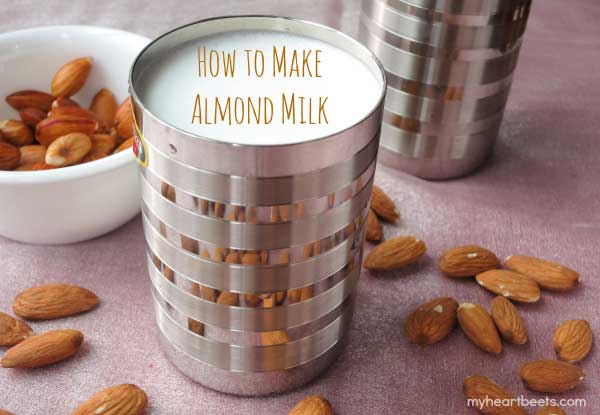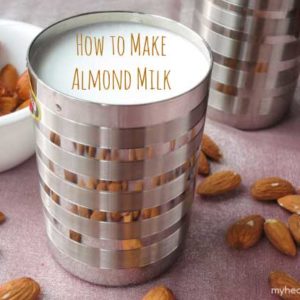My method for almond milk is slightly different than the way most people make theirs – and that’s because I use peeled, soaked almonds. I do this because I think it tastes better this way. After soaking almonds overnight, you’ll notice that the almonds will become nice and plump. This makes the almonds softer, which in turn yields smoother milk. Once your almonds have soaked overnight, drain the water and remove the skins. I always pop my almonds in the microwave for 30 seconds or so – it makes the peels SO easy to slide right off. Place the white almonds along with water into your vitamix or into a powerful blender, and blend on high for a minute – or until the milk is super smooth. Use a nut milk bag (or double lined cheese cloth) to strain the almond milk into an airtight container and store it in the fridge for a couple days. The milk will separate in the fridge so you’ll have to stir it before drinking. Don’t throw away your leftover almond pulp! You can use it in SO many ways. I usually store my pulp in the freezer until I have a decent amount – then I’ll put it into my dehydrator, blend it up and use it as almond meal. If you don’t want to go through all the trouble – freeze the pulp in an ice cube tray and then use it in a smoothie for some extra protein. You can adjust this recipe according to taste – by adding dates, vanilla bean, salt, cinnamon, whatever you’d like. I prefer making the milk with just two ingredients (almonds, water) because then you can adjust the flavor according to personal taste. For those days when you’re looking to indulge in a creamy glass of pure deliciousness, make this recipe for my homemade almond milk. Now that you know how to make almond milk, check out my homemade coconut milk tutorial. Like this recipe? Pin it to your favorite Pinterest board now so you will remember to make it later!

